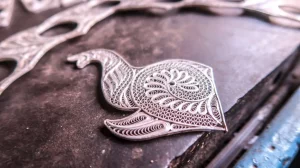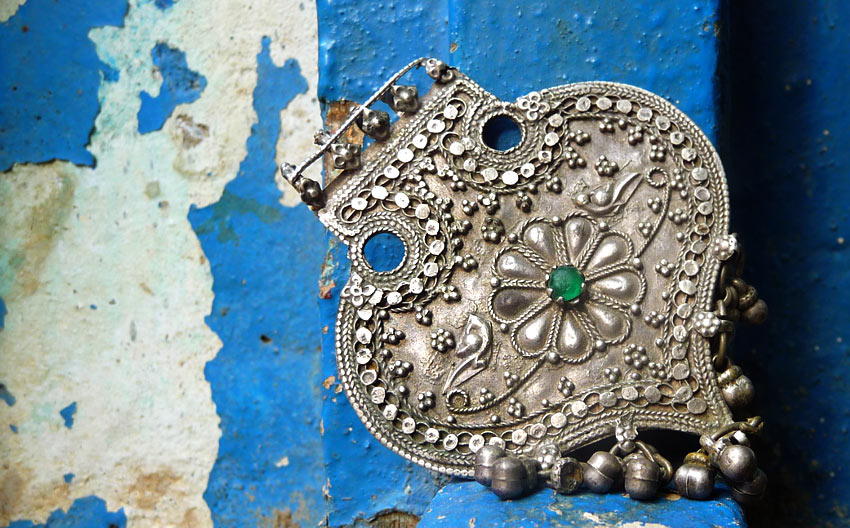India, a land of immense cultural diversity, is a treasure trove of artistic expression. From ancient scriptures and architectural marvels to vibrant ethnic designs and diverse literary traditions, is an affirmation of India’s rich heritage.
Imagine intricate patterns woven from tiny threads of precious metal. This is the magic of filigree, an ancient craft that has been practised in India for centuries. It is the delicate art of intertwining fine wires of gold and silver arranged in artistic motifs, to create breathtaking jewellery and home-decorative objects. Silver filigree art is also called “Tarkashi work” in Hindi.

In India, this art form flourishes mainly in Cuttack, Orrisa, known as the Silver City of India, which is home to nearly 2000 Tarkashi artisans who inherited the knowledge, technique and skills from their forefathers.
The history of filigree work in India can be traced back to the Indus Valley Civilization, where evidence of silver filigree ornaments has been found. One of the most famous examples of Indian filigree work is the traditional silver jewellery from Kutch, Gujarat. This jewellery is mostly seen and known to us as “oxidised jewellery”- the imitation of silver filigree work.
More than just an artistic expression, filigree work is a cornerstone of India’s cultural heritage. The intricate designs and delicate beauty of filigree pieces showcase the remarkable skill and creativity of Indian artisans. As a testament to India’s rich tradition of craftsmanship, filigree serves as a reminder of the importance of preserving and promoting traditional arts.
Every traditional craft has seen a phase of not being recognised in society, and so has filigree work. In recent years we have seen a rise in slow fashion and sustainable practices. This has not only benefited the environment but also the traditional crafts and their revival.
There has been a renewed interest in filigree work, with designers and new-age jewellery brands such as Giva and CaratLane, incorporating the technique into modern jewellery designs. The art form has also been given a new lease of life by social entrepreneurs who are working to revive traditional crafts and provide a sustainable livelihood to artisans.
Efforts made by the Government and NGOs have also helped in the preservation and renewal of traditional arts and crafts. The Gem and Jewellery Export Promotion Council (GJEPC) is actively working to preserve and promote traditional jewellery crafts like filigree. At their annual India International Jewellery Show (IIJS), they showcase these crafts in a dedicated Crafts Pavilion, highlighting their historical significance and encouraging their integration into modern designs.
Nina and Bharat Ganatra, the founders of Hemraj Jewellery Craft, have been showcasing their exquisite filigree jewellery at the India International Jewellery Show (IIJS) since 2011. Their participation has led to a global clientele. Now, they are spearheading the formation of the Cuttack Tarkashi Association, an association aimed at fostering collaboration among craftsmen, investors, and sellers to promote the production of handcrafted filigree jewellery in Cuttack on a larger scale.
Thanks to the dedication of artisans, designers, and various organizations, filigree is enjoying renewed popularity, ensuring its place as a vibrant part of India’s artistic heritage, that is now increasingly going global. As we look towards the future, we must continue to support and promote this timeless craft and all the others, to safeguard its rich legacy and inspire future generations of talented artisans.




